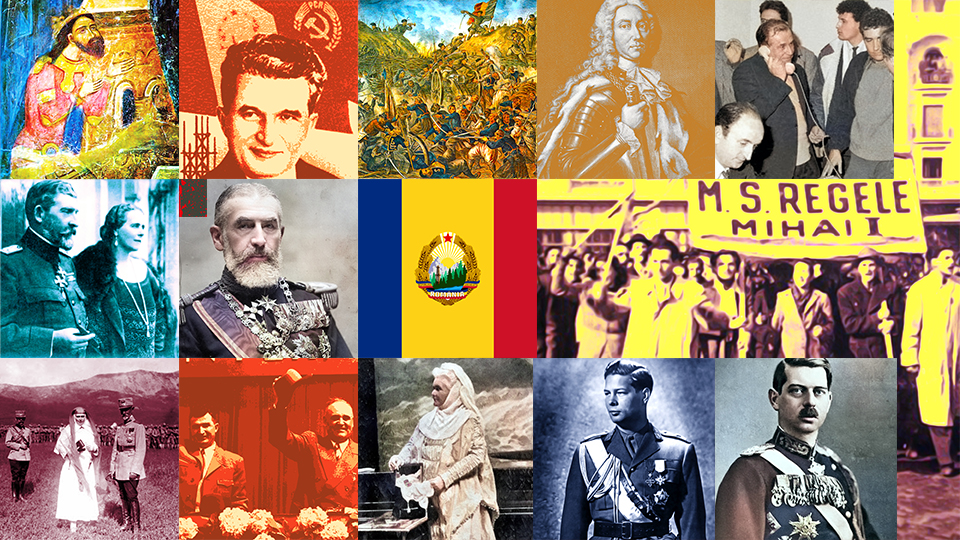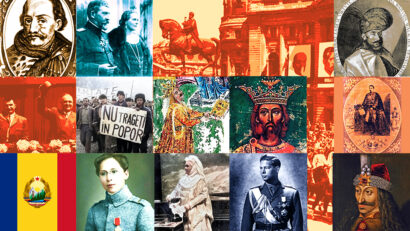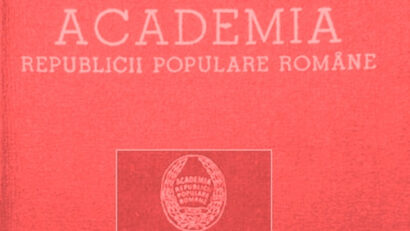Stalinism and the Study of History in Romania
In the Stalinist era, social sciences were as ideologically charged as many other parts of people’s lives

Steliu Lambru, 24.11.2025, 13:30
In the Stalinist era, science was as ideologically charged as many other parts of people’s lives, and social sciences, history included, were the most affected. History was rewritten and censored at all levels, and this was the mildest form of repression. The harshest form was the physical one, prison, where important Romanian interwar historians ended up.
The historian Ion Agrigoroaie was a student with the University of Iași during the height of the Stalinist regime. In 1995, he told the Oral History Centre of the Romanian Broadcasting Corporation about the atmosphere he found at the university when he became a student.
Ion Agrigoroaie: “In 1954 I graduated from the Costache Negruzzi boarding school in Iași, at a time when the influences of Stalin’s cult of personality were quite strong. However, the boarding school provided us with an important foundation for academic performance. In 1954, shortly after Stalin’s death, the cult of personality was still very strong. University departments were reorganised. The year I became a student, the Philosophy School merged with the History Department to become the Philology and History Department, with a Romanian section, a history section, a Romanian history section and a Russian section. The foreign language sections, including French, English and German, had been dismantled.”
Despite the difficulties, the academic staff tried to pass on accurate knowledge to the new generations whose professional careers were already affected by politicisation:
Ion Agrigoroaie: “I would like to say that we had professors who fully honoured their teaching and historian professions. We had professors, although not all of them, who taught us how to learn. Few people are aware now that during those years the works of Nicolae Iorga or Vasile Pârvan, let alone Gheorghe Brătianu, could not be studied. I would point out that we had dissimilar backgrounds, in terms of education. There were big differences between students from this point of view, especially since some also had more or less legal diplomas. And during that period and for a few more years after that, emphasis was placed on students’ background, that is, on the social origin of the parents, and on whether or not we were members of the Workers’ Youth Union. Back then, very few of us could be members of the communist party, the Romanian Workers’ Party, as it was called then, and I understood later that these select few had to a certain extent secured their admission to universities’ social sciences departments.”
The Soviet educational advisors were the ones who made sure that the new history was taught in accordance with the communist ideology:
Ion Agrigoroaie. “There was a Soviet consular office in Iaşi, with a Soviet cultural counselor, who had the right or obligation to control the teaching of social sciences. The course material had to be written and, at his request, he could see it, inspect it, and give his opinion on its contents. The case of the late Professor Constantin Cihodariu is very well known. He discussed why the Romanian army had to step in, in 1877, at the request of Russian commanders south of the Danube, who had advanced too far and had not secured their rear-guard. The Grand Duke Nicholas asked Prince Carol to take action immediately, and there is a famous telegram in this regard. Professor Cihodariu used to say that some Russian army commanders had been incompetent in leading operations south of the Danube and were concerned not only with military operations. Well, this greatly upset the Soviet consular office in Iaşi, which saw this as a denigration of the Russian army. Professor Cihodariu emphasised that he had taken the information from Soviet history works. But he was told that what Soviet historiography was allowed to say, we were not. And then he was demoted from associate professor to assistant, and was on the verge of being expelled from higher education altogether.”
The rewriting of Romania’s past was also extended to public monuments:
Ion Agrigoroaie. “I witnessed the toppling of the statue of Titu Maiorescu in front of the University. I think I was a student, I can’t remember if it was 1953 or 1954. There were statues of Mihail Kogălniceanu and Mihai Eminescu there, and then some changes were made. Next to the statue of Kogălniceanu there was the statue of Maiorescu. It was simply pulled with a rope, and for years after that, whenever I walked there I would try to go around the mark left on the asphalt by the falling statue. I found out later on, when they looked for it to put it back in place, that it had been melted. There were some traumas, no doubt.”
History during Stalinism is an example how the profession and truth were perverted. No one should experience political standards imposed instead of professional ones, as Romanians and other nations experienced. (AMP)




























